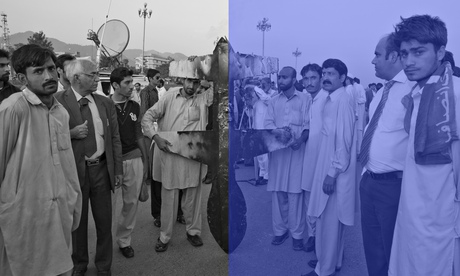In October 1947, Philip Larkin wrote to his friend Jim Sutton about a recent “act of madness” – he had spent £7 on a camera. The British-made Purma Special had cost him more than a week’s wages, but it was state of the art compared with his previous model, a box camera that had been given to him by his father in 1937, when Larkin was 15.
“I am so far awaiting my first roll of results,” Larkin told Sutton in the same letter. “If they are bad, I shall feel I have been rather a fool.”
The results were in fact good, despite the fact that the Purma was, as Larkin put it, “a ‘fast’ camera, that is, best suited to swift scenes in bright sun” and: “I like poor light the best and I don’t think it will do any good in that line.” It seems somehow apt that Larkin, who once said “deprivation is for me what daffodils were for Wordsworth”, should be drawn aesthetically to “poor light” – all the better to see some essence of England by, perhaps? Larkin later graduated to the altogether more classic Rolleiflex, on which he made many of his pensive self-portraits. Throughout, his visual style, like his poetic one, tended towards what the literary critic John Bayley called “a glum accuracy about places and emotions”… and people.
The photographs collected chronologically in The Importance of Elsewhere are culled from some 5,000 prints and negatives in the archives of the Hull History Centre. They are not, in the main, groundbreaking. They do, though, trace Larkin’s progress from an amateur enthusiast to a formally astute photographer with a keen eye for composition, whether making portraits of his friends, family, lovers and coterie of literary friends or casting his cold eye over the English countryside. There are moments of peculiar beauty here, mostly to do with his cool observation of English vernacular architecture: an austere Wesleyan chapel in East Yorkshire caught in stark monochrome; tall obelisks casting long shadows in a country graveyard in Oban.
The most Larkinesque series, apart from the many studied self-portraits, centres on the names of Yorkshire villages – Laxton, Faxfleet, Kiplin, Yokefleet. The poetry of place names, familiar from his verse, is here rendered in stark black and white, the silhouettes of buildings looming in the background behind these functional, yet lyrical, signs that nestle on well-tended grassy verges.
Of Larkin’s lovers, Ruth Bowman, Monica Jones, Patsy Strang and Maeve Brennan are each given a chapter, but it is Monica who emerges most strongly as a forceful presence in his portraits. Whether staring down the lens while curled up on an armchair, wearing horn-rims, jumper and vertically striped tights, or gazing in profile out of the window of her flat in Leicester in the early 1960s, she seems utterly at ease before Larkin’s camera. In contrast, there is a striking portrait of Maeve Brennan, looking up from a book, melancholy and almost Victorian in a high-necked, long-sleeved dress. It was taken shortly after they had agreed to end their relationship and seems to carry all the weight of that decision in its sombreness.
Larkin also photographed the world around him wherever he went: his chum, Kingsley Amis, at Oxford and beyond, portraits of friends who had been conscripted during the second world war, Orange marches in Belfast in the early 50s, shipyard cranes and shopfronts in Hull a few years later. Here and there, the images and the poems seem to chime: a vibrant street scene in Dublin captures a crowd of children and adults watching a passing parade or funeral. Only one young girl stares suspiciously at Larkin’s camera and you can almost see him though her eyes, a nerdish outsider observing. One wonders if the image was echoed in his late poem, Dublinesque, in which he described how “Down stucco sidestreets,/ Where light is pewter/ And afternoon mist/ Brings lights on in shops/ Above race-guides and rosaries,/ A funeral passes”.
A fascinating and tantalising book, then, and one that sheds light on a great poet and tricky human being, who seems to have found, in photography, another altogether less fretful – and perhaps kinder – way of preserving what he experienced.
The Importance of Elsewhere: Philip Larkin’s Photographs is published by Frances Lincoln (£25). Click here to order it for £20











